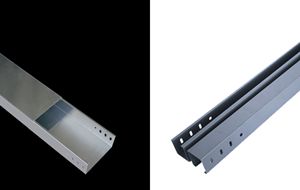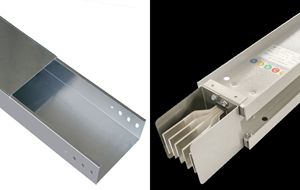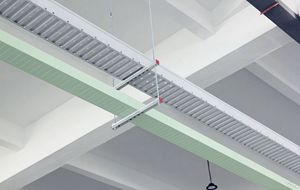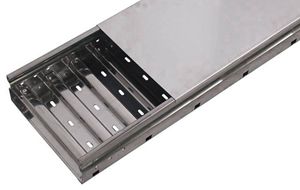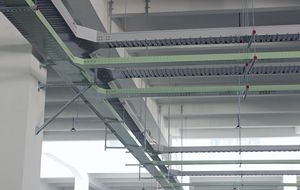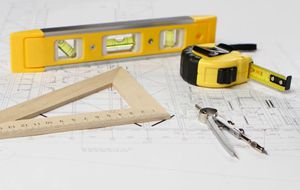-
Differences between fire-resistant cable tray and ordinary cable tray
The fire-resistant cable tray is to spray a layer of fire-resistant paint on the surface of the ordinary cable tray to play the role of fire-retardant and fire-retardant! In fact, the cable tray itself does not catch fire, only the cable may catch fire. Fire cable trays are different from ordinary cable trays in three points: Firstly, different functions: Fireproof cable tray: The fireproof cable tray is to spray a layer of fireproof paint on the surface of the ordinary cable tray to play the role of fire retardant. 2.Ordinary cable trays: The cable trays in the building can be erected independently, or can be attached to various building (structure) and pipe corridor supports, should reflect the characteristics of simple structure, beautiful appearance, flexible configuration and convenient maintenance, all parts need to be galvanized and installed on the open cable…
Learn More -
The difference between Cable Tray and Busway
The difference of function Cable tray, used in cable laying, belongs to the bracket, generally used to help support and protect the cable. busway, similar to cable, it is for AC 50HZ,380V three-phase four-wire system or three-phase five-wire system power distribution system transmission of electricity, can replace the cable distribution mode. The difference of composition The general name of the rigid layout system composed of bracket, supporting arm, installation accessories and so on, which has a dense supporting cable; busway is a bus system composed of metal plate as protective shell, conductive bar, insulating material and related accessories. The difference of size and specification The cable tray is relatively large and the busway is relatively small. If there are many cables and wires, a cable tray is recommended. The difference of intensity The cable tray is mainly…
Learn More -
Introduction of Cable Trays
Introduction: Today cable trays have become a necessary part of industrial and commercial construction by offering quick, economical and flexible solutions to these problems. Cable trays are capable of supporting all types of wiring: 1. High Voltage Power Lines. 2. Power Distribution Cables 3. Sensitive Control Wiring 4. Telecommunication Wiring 5. Optical Cables Cable Tray Materials: Most cable tray systems are fabricated from a corrosion-resistant metal (low-carbon steel, stainless steel or an aluminium alloy) or from a metal with a corrosion-resistant finish (zinc or epoxy). The choice of material for any particular installation depends on the installation environment (corrosion and electrical considerations) and cost. (1) Aluminium: Cable trays fabricated of extruded aluminium are often used for their high strength-to-weight ratio, superior resistance to certain corrosive environments, and ease of installation. They also offer the advantages of…
Learn More -
XMBG Series Corrugated Cable Tray
Brief introduction of XMBG Series Corrugated Cable Tray XMBG Series Corrugated Cable Tray (referred to as “XMBG Cable Tray”) has advantage of energy saving, light weight, high strength and corrosion resistance. As ideal replacement product, It’s more economic and technical than traditional. New technologies, new products-cast new standards for industry The innovation of XMBG cable tray is that it uses a three-dimensional structure instead of the traditional flat structure according to the principle of material mechanics, which greatly improves the mechanical strength of the cable tray , reduces the thickness of the steel plate and own weight, and saves resources. The product complies with T/CECS31-2017 "Technical Specifications for Steel Cable cable tray Engineering", which specifies the requirements for the design and selection of cable trays. The national standard GB/T23639-2017 "Energy-saving and corrosion-resistant steel cable tray" compiled in 2017 was formally…
Learn More -
Application of Cable Tray
In the process of using the cable tray, we often use electrical accessories such as cable terminal junction box, cable intermediate junction box, connecting pipe and terminal, steel plate slot, cable tray, etc. These equipments also make the cable tray suitable for indoor and outdoor overhead laying of power cables and control cables in general industrial and mining enterprises, and also for indoor and outdoor erection of telecommunication, radio and television departments. Cable tray is widely used as electronic transmission equipment in modern society, so everyone knows what contribution it has made to the industry. Cable trays have made a relatively macro contribution to the construction industry. Even office buildings and commercial buildings are now using galvanized cable trays to protect civil structures. The types of cable trays used in different terrain areas are different. Generally, slot type composite cable…
Learn More -
Calculation of Cable Tray Size
Calculate Size of Cable Tray for Following Cable Schedule. Cable Tray should be perforated and 20% spare Capacity. Distance between each Cable is 10mm. Cable are laying in Single Layer in Cable Tray. (1) 2 No’s of 3.5Cx300 Sq.mm XLPE Cable having 59.7mm Outer Diameter and 5.9 Kg/Meter weight (2) 2 No’s of 3.5Cx400 Sq.mm XLPE Cable having 68.6mm Outer Diameter and 6.1 Kg/Meter weight (3) 3 No’s of 3.5Cx25 Sq.mm XLPE Cable having 25mm Outer Diameter and 0.5 Kg/Meter weight Calculation: Total Outer Diameter of all Cable Passing in to Cable Tray: Diameter of 300Sq.mm Cable =No of Cable X Outer Diameter of Each Cable Diameter of 300Sq.mm Cable =2X59.7 = 119.4 mm Diameter of 400Sq.mm Cable =No of Cable X Outer Diameter of Each Cable Diameter of 400Sq.mm Cable =2X68.6= 137.2 mm Diameter of 25Sq.mm Cable =No of…
Learn More





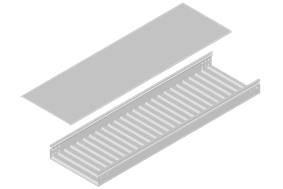 Solid Corrugated Cable Tray
Solid Corrugated Cable Tray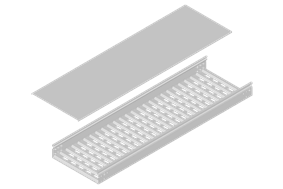 Perforated Corrugated Cable Tray
Perforated Corrugated Cable Tray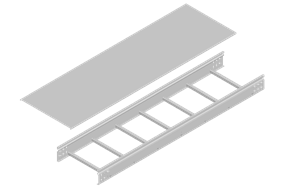 Ladder Corrugated Cable Tray
Ladder Corrugated Cable Tray